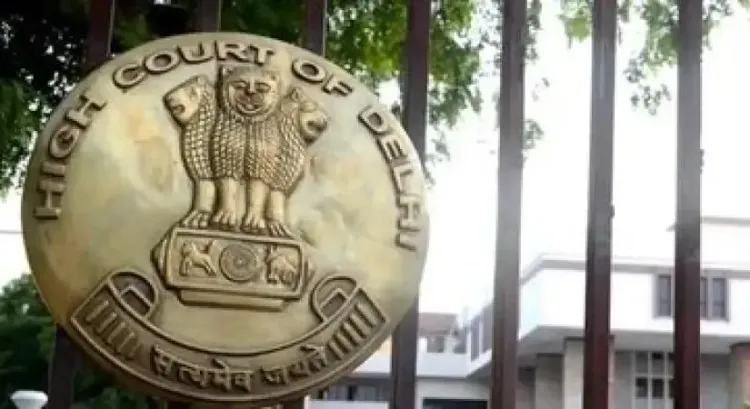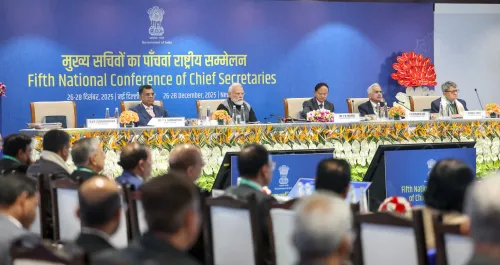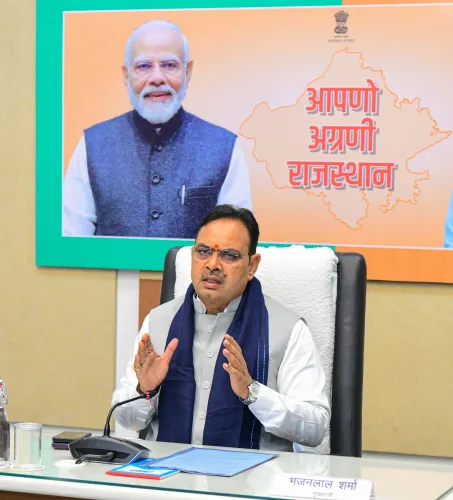Is There a Proposal to Introduce a Rs 50 Coin?

Synopsis
Key Takeaways
- Union Ministry of Finance confirms no proposal for Rs 50 coin.
- Current Rs 50 note design presents challenges for visually impaired users.
- Public preference leans towards banknotes over coins.
- The RBI's MANI app aids in currency identification.
- Economic factors influence decisions on currency denominations.
New Delhi, July 9 (NationPress) The Union Ministry of Finance has informed the Delhi High Court that there is currently no proposal being considered for the launch of a Rs 50 coin. The Centre's statement was in response to a petition filed by advocates Rohit Dandriyal and Mini Agrawal, who requested directions to issue a Rs 50 coin, emphasizing the challenges faced by visually impaired individuals due to the design of the Rs 50 currency note, which complicates denomination differentiation.
Referring to a survey conducted by the Reserve Bank of India (RBI) in 2022, the Union Ministry of Finance noted a public preference for banknotes over coins for Rs 10 and Rs 20 denominations. The weight and size of coins, particularly their similar dimensions, create significant obstacles for users.
The ministry stated that the decision to issue a coin of a specific denomination depends on various factors, including public acceptance and the frequency of its use in daily transactions.
“As shown by the RBI's survey, the public shows a clear preference for banknotes over coins in the Rs 10 and Rs 20 denominations. Consequently, any decision regarding the introduction of a Rs 50 coin will consider multiple factors such as economic needs, public acceptance, and concerns of visually impaired individuals,” the affidavit from an Under Secretary in the Coin & Currency Division of the Department of Economic Affairs stated.
The plea to the Delhi High Court argued that while other currency notes are designed to be accessible for visually impaired persons, the Rs 50 note lacks such features.
The petitioners claimed that the Rs 50 note is visually indistinguishable from both the Rs 100 and Rs 500 notes, and there is currently no Rs 50 coin available as an alternative.
They pointed out that the Rs 50 note does not include any intaglio printing or tactile markings, making it inaccessible to visually impaired individuals and leaving them without viable substitutes.
In its response, the Union Ministry of Finance affirmed that banknotes possess identification marks on the front, including raised (intaglio) printing, with distinct shapes for different denominations to assist visually impaired users.
It explained, “Banknotes with denominations of 100 and above feature angular bleed lines to assist the visually impaired: the Rs 100 note has four angular lines in two blocks; the Rs 200 note has four angular lines in two blocks with two circles in between; the Rs 500 note has five angular lines in three blocks, and the now-withdrawn Rs 2000 note had seven angular lines.”
However, the Union Ministry acknowledged that such identification marks through raised printing are absent in the Rs 10, Rs 20, and Rs 50 denominations of the Mahatma Gandhi (New) Series.
According to the RBI, reintroducing intaglio printing in lower denomination notes was deemed impractical, as the tactile effect erodes quickly due to frequent handling. Since lower denomination notes circulate more widely, the degradation of tactile features is more noticeable, the affidavit stated, adding that reintroducing intaglio printing would significantly affect the cost and efficiency of currency production.
Moreover, the response document indicated that the RBI launched a mobile application, MANI (Mobile Aided Note Identifier) in 2020 to assist visually impaired persons in identifying banknote denominations.
“The app is available for free and is utilized by approximately 1.5 million users. It can identify the denominations of all Mahatma Gandhi series currency notes (both new and old),” stated the Union Ministry of Finance.
Requesting the Delhi High Court to dismiss the plea, the affidavit concluded that currently, there is no proposal regarding the introduction of a Rs 50 coin under consideration by the Department of Economic Affairs.










